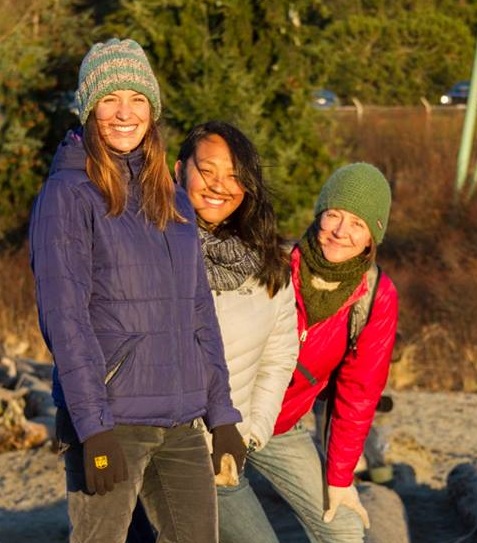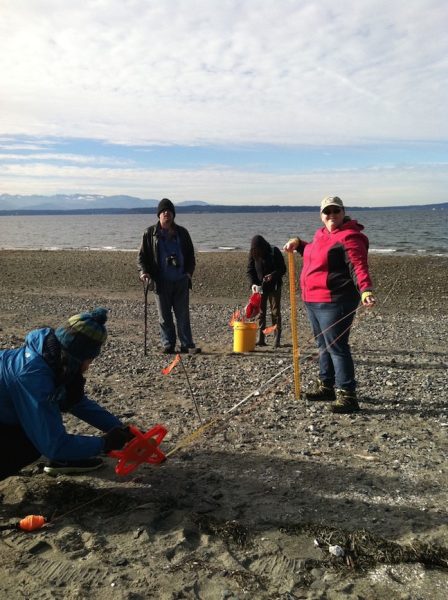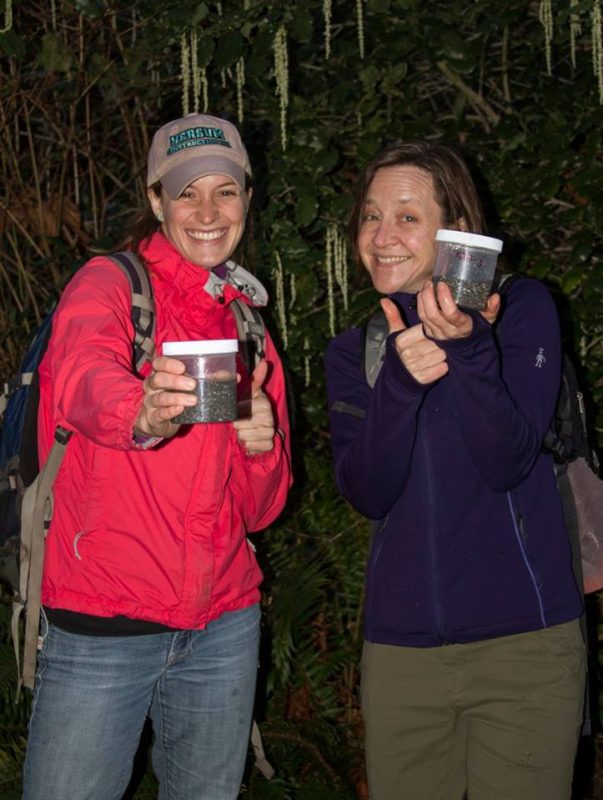Forage Fish Monitoring

Forage Fish Team Members from left to right: Christina Hersum, Vera Huang, and Gail Pethe.
Forage fish are a vital part of the Puget Sound food web. They fill a niche between plankton and salmon.
Despite this, remarkably little is known about them. Scientists now believe their abundance is declining. But why? Can we stop it? To answer this, they are asking basic questions, such as: Where do these fish spawn? At what tidal elevation? During which months?
Volunteers inspired to act
These questions struck a chord in three passionate volunteers: Christina Hersum, Vera Hoang and Gail Pethe—from the Seattle Community Action Training School.
They embarked on a year-long study of the fish at Carkeek Park. Carkeek Park, located nine miles from downtown Seattle, is popular for its fantastic views, miles of trails and beautiful beach.
At one end of the beach Piper’s Creek meets Puget Sound. This creek has undergone extensive efforts to restore the salmon populations after commercial over-harvesting in the 1920s. Now that species are regaining sizable numbers, autumn visitors can spot hundreds of steelhead, chum and coho striving their way upstream to spawn. This salmon run added to the appeal of Carkeek Park as the chosen site for the project.
Each month, along with Mid Sound’s Special Projects Director, Leihla Scharlau, they used protocols developed by Washington Department of Fish and Wildlife (WDFW) to collect samples at low tide—rain or shine, in darkness or daytime.
“These three women are dedicated to science—and to educating the public about a type of fish so few people know about,” says Scharlau. “Sand lance? Surf smelt? Most people will give you a blank stare. But with more data, and studies like this, we can educate people about the importance of these fish, and what can be done to protect their populations.”
Hersum says, “I feel as though we have at least one interaction with the public each time we sample, and we get the opportunity to talk to them about forage fish. I think that is a definite highlight of this project.”

Picture here is Leihla (right) and the rest of the forage fish team collecting samples at various elevation increments.

Vera & Gail are shown here carrying the collected samples.
New data for a statewide effort
Mid Sound Fisheries Enhancement Group was pleased to work with WDFW on a cutting-edge issue for Puget Sound. “Forage fish play a critical role in the food web, providing nutrients for marine mammals, seabirds, salmon and even people,” says Phillip Dionne, research scientist at WDFW.
WDFW provided training and support for the project, as the data is part of an ongoing effort by the department to document forage fish presence around Puget Sound.
Carkeek had been sampled by WDFW in 1992, 1993, 2005 and 2007. All of previous years had no record of eggs found making this an undocumented beach for forage fish.
But in this study, out of 13 months of sampling we had one sample that counted as presence for Surf Smelt. (One other month we found one egg but two are needed to count.) Carkeek Park will now be on the record as a spawning beach for Surf Smelt.
Funding for this project was provided by the Western Division of American Fisheries Society, with the original CATS program funded by Puget Sound Partnership. Additional partners included WDFW, Nooksak Salmon Enhancement Association, Seattle Parks and Recreation and Earthcorps.